-
Adopt
-
Veterinary Care
Services
Client Information
- What to Expect – Angell Boston
- Client Rights and Responsibilities
- Payments / Financial Assistance
- Pharmacy
- Client Policies
- Our Doctors
- Grief Support / Counseling
- Directions and Parking
- Helpful “How-to” Pet Care
Online Payments
Referrals
- Referral Forms/Contact
- Direct Connect
- Referring Veterinarian Portal
- Clinical Articles
- Partners in Care Newsletter
CE, Internships & Alumni Info
CE Seminar Schedule
Emergency: Boston
Emergency: Waltham
Poison Control Hotline
-
Programs & Resources
- Careers
-
Donate Now
Training your dog may seem like a daunting task at first. After all, dogs are animals, and each has a unique learning pace. However, it’s essential to train your dog well. Proper training and socialization are basic needs for your furry friend. Dogs thrive with structure — a set of rules and regulations to follow. Remember that dogs are descendants of wolves, and there’s always a leader within a pack. In your dog’s life, that leader should be you (or at least it should be someone they trust and respect). Dr. Terri Bright, Ph.D., BCBA-D, CAAB, Director of Behavior Services at the MSPCA-Angell, offers some dog training basics to help you get started.
From Pups to Adults – What to Use and How to Train
“When it comes to training your dog, it’s essential to ensure that both you and your pet enjoy the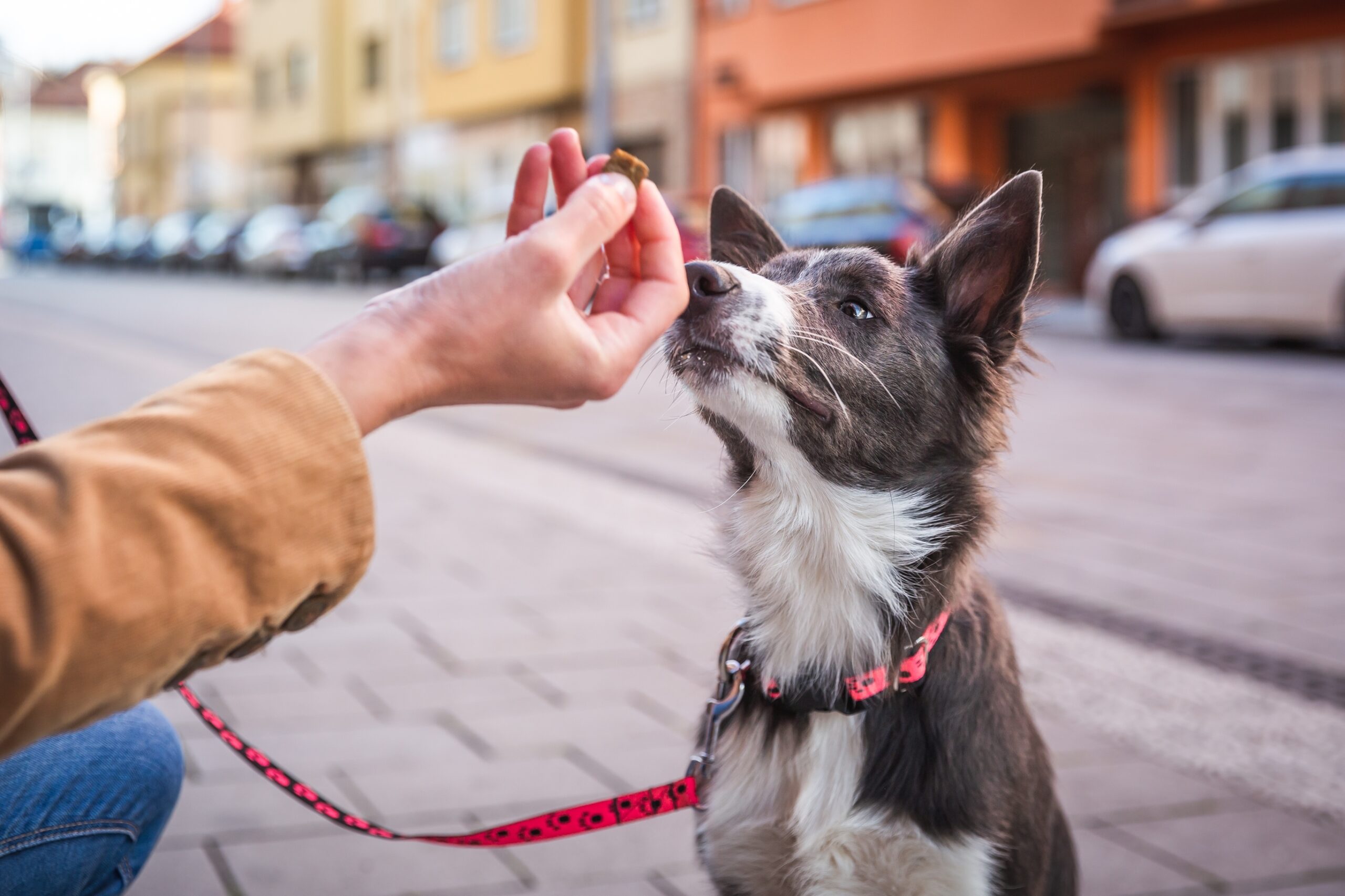 process,” explained Dr. Bright. To achieve this, she suggests a few simple rules to follow:
process,” explained Dr. Bright. To achieve this, she suggests a few simple rules to follow:
- Keep the training sessions short and enjoyable, not exceeding five minutes at a time.
- Choose a reward that your dog finds motivating. While food often works best, some dogs may also respond well to toys, playtime, or your attention (simple praise is usually not enough).
- Reward the behaviors you want to encourage and ignore those you don’t. Remember, reinforced behaviors will be repeated, while those that are not will eventually fade.
“It is recommended by the American Veterinary Society of Animal Behaviorists that young puppies should be exposed to the world at an early age, even before they have all of their vaccinations,” said Dr. Bright. “This process, known as ‘socialization,’ is crucial between the weeks of 4 to 14, as it is a specific time in a dog’s life when they can quickly learn to tolerate different sounds, scary situations, people, and how to behave appropriately with other dogs.” If a puppy shows fear towards something, it’s best to allow them to move away while rewarding them with treats. Taking them to wild and chaotic dog parks is not advisable as they may develop aggressive behavior if frightened. Instead, they should be paired with other gentle dogs with similar play styles.
Training is an essential aspect of having a puppy or an adult dog. However, it can be overwhelming to know where to start. “The best way to begin is by identifying what your dog loves and using it as a reward when they exhibit the desired behavior,” said Dr. Bright.” Dogs have a fantastic sense of smell, so anything with a strong odor can be an excellent reward.” Freeze-dried meats are a perfect option for treats as they can be small, with one treat equivalent to half a pea.
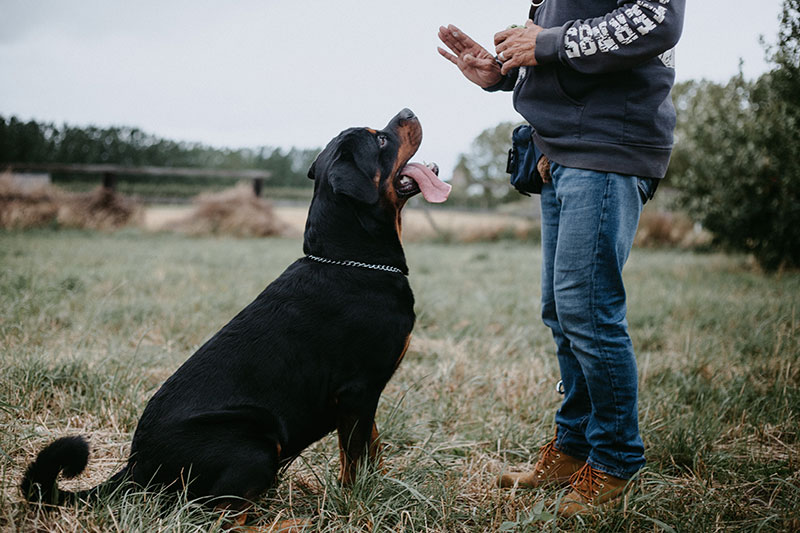 You can train your dog to do a few standard behaviors, which can be quite helpful. These include sit, down, stay, come when called, and loose-leash walking. “When training your dog, be sure to immediately give them a treat as a reward after they do what you ask,” suggested Dr. Bright. “While it’s possible that you may need to use the treat to encourage them to start a new behavior, it’s important to quickly transition to giving the treat afterward so that you don’t have to bribe them into doing what you want.”
You can train your dog to do a few standard behaviors, which can be quite helpful. These include sit, down, stay, come when called, and loose-leash walking. “When training your dog, be sure to immediately give them a treat as a reward after they do what you ask,” suggested Dr. Bright. “While it’s possible that you may need to use the treat to encourage them to start a new behavior, it’s important to quickly transition to giving the treat afterward so that you don’t have to bribe them into doing what you want.”
Always stay on the positive side when training your dog. This means rewarding them when they get it right and never using scary or punitive measures such as shaking something loud, using collar corrections, or electronic collars. Using these methods can lead to fear and aggression in your dog, which is well-documented in behavioral literature.
Helpful Equipment to Help You Train Your Dog
If you have a strong dog who hasn’t learned to walk on a loose leash yet, some helpful equipment options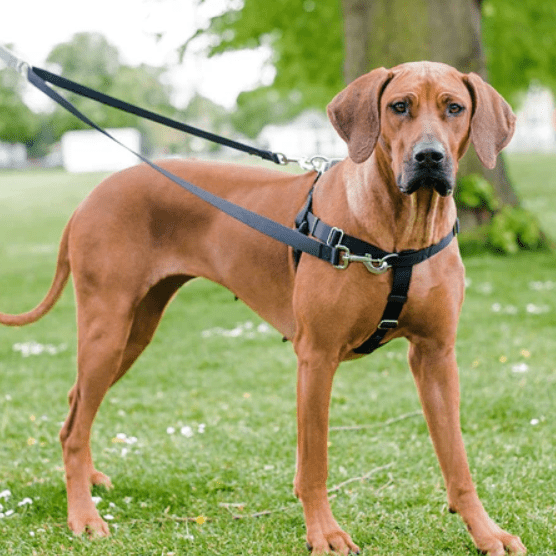 are available. Head harnesses like Sporn, Gentle Leader, or Snoot Loop can be beneficial. Our recommended body harness is the Freedom No-Pull Harness, which comes with a unique leash that can be hooked to the front and top rings. You can encourage your dog to walk by your side more often by giving them a treat every two to four steps, particularly on your left side. To make it easier to carry treats, you can use a 2- to 3-ounce silicone squeeze bottle, often sold at drug stores for lotion or shampoo. You can fill it with peanut butter, light cream cheese, or even wet dog food for a long-lasting treat that you can deliver with gloves on.
are available. Head harnesses like Sporn, Gentle Leader, or Snoot Loop can be beneficial. Our recommended body harness is the Freedom No-Pull Harness, which comes with a unique leash that can be hooked to the front and top rings. You can encourage your dog to walk by your side more often by giving them a treat every two to four steps, particularly on your left side. To make it easier to carry treats, you can use a 2- to 3-ounce silicone squeeze bottle, often sold at drug stores for lotion or shampoo. You can fill it with peanut butter, light cream cheese, or even wet dog food for a long-lasting treat that you can deliver with gloves on.
Dog Training Basics to Try
Sit
- Get some tasty treats and cut them into small pieces. Stand in front of your dog and hold out your closed hand with the treats inside so he can smell them.
- Slowly move your hand toward the back of your dog’s head. This will cause him to lift his head, and his butt will automatically go down into a sitting position.
- As soon as your dog sits, say “yes” and give him a treat. Repeat this several times, using the treats to lure him into the sitting position.
- Once your dog is sitting consistently, stop using the treats as a lure. Instead, use a hand motion to direct him into the sit. You want to teach him that sitting brings rewards rather than just bribing him with treats.
- Stand before your dog and wait for him to sit on his own. When he does, say “yes” and give him a treat and lots of praise. This will reinforce the idea that sitting brings rewards.
- Now, it’s time to add the verbal command “sit.” When your dog is about to sit, say the word “sit.” When he sits, say “yes” and give him a treat. Repeat this several times until your dog associates the word “sit” with the action of sitting.
- Once your dog has learned the command, start using a variable schedule of rewards. This means he won’t get a treat every time he sits but will have to do multiple sits or other behaviors to earn a reward. This will keep him motivated to do what you ask.
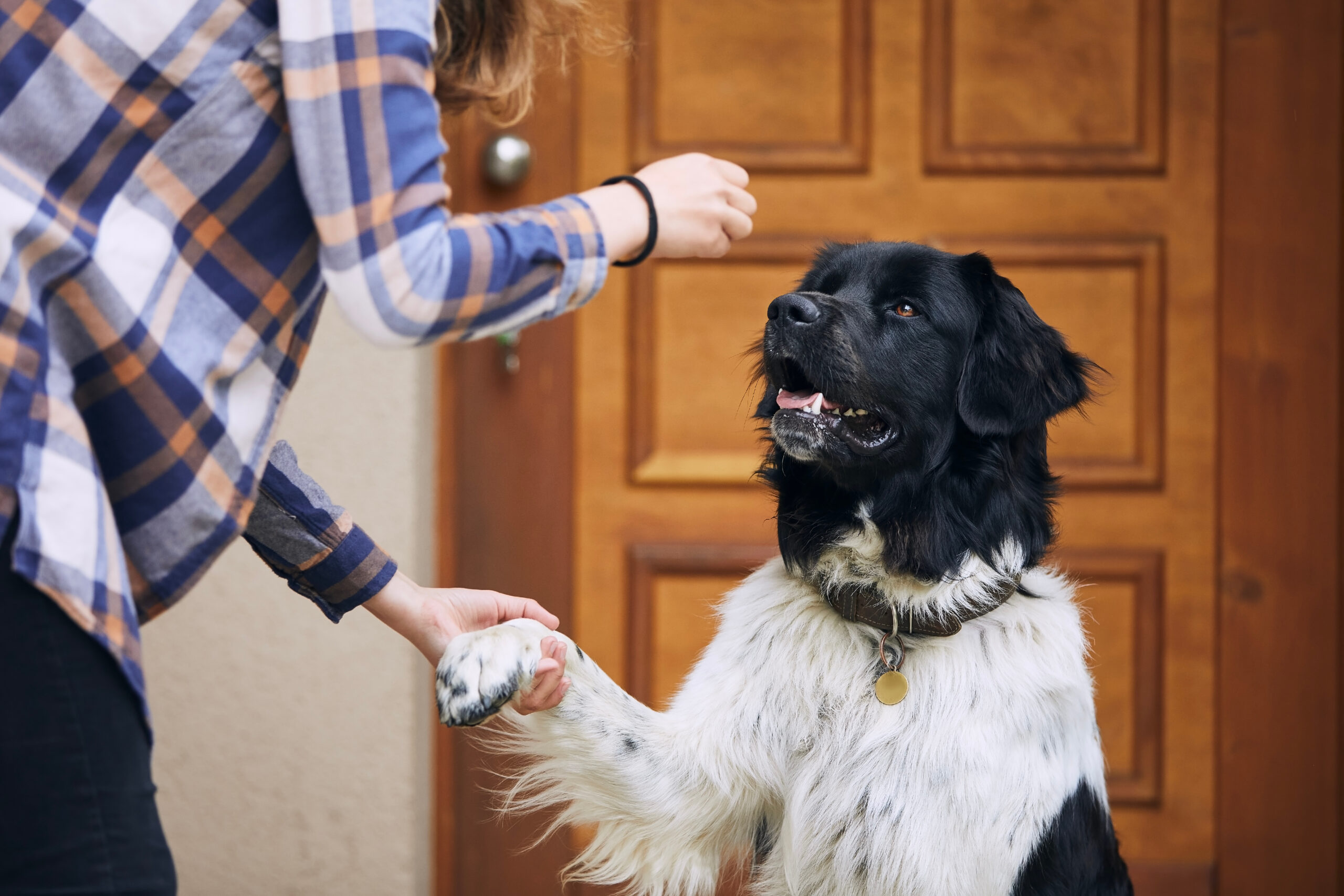
Come
Teaching a dog to come when called is essential for his safety and well-being. You can make it a fun game by playing “doggie in the middle.” Here’s how to do it.
- Start in the house where there are fewer distractions. Have two people stand about six feet apart and take turns saying “come” while the dog runs back and forth between them.
- When the dog reaches you, say “yes” and give him a treat. Gradually increase the distance until you are at opposite ends of the house, and your dog runs back and forth to the command “come.”
- Once you have a strong recall inside the house, move to the yard and teach your dog that “come” means the same thing. Start over, about six feet apart, because the yard has more distractions.
- Once your dog comes to you from opposite ends of the yard, move on to the park. Again, start six feet apart because the park has even more distractions.
- Reinforce the recall by calling your dog to you at different times. Reward him for coming to the word “come” with a special treat. Never ask your dog to come and then do something unpleasant, like cutting his nails or yelling at him. If you need to do these things, get him.
- Remember, coming to the word “come” should always be positive! Be patient; this is one of the most important things you’ll teach your dog.
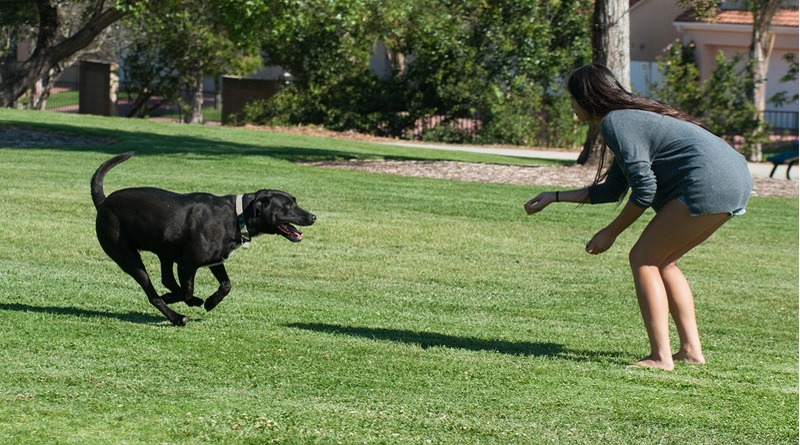
x
If you want to expand on your dog’s training or to help you get started on the right foot, check out the MSPCA-Angell’s Behavior and Training services and register for a class today! https://www.mspca.org/training-and-behavior/



